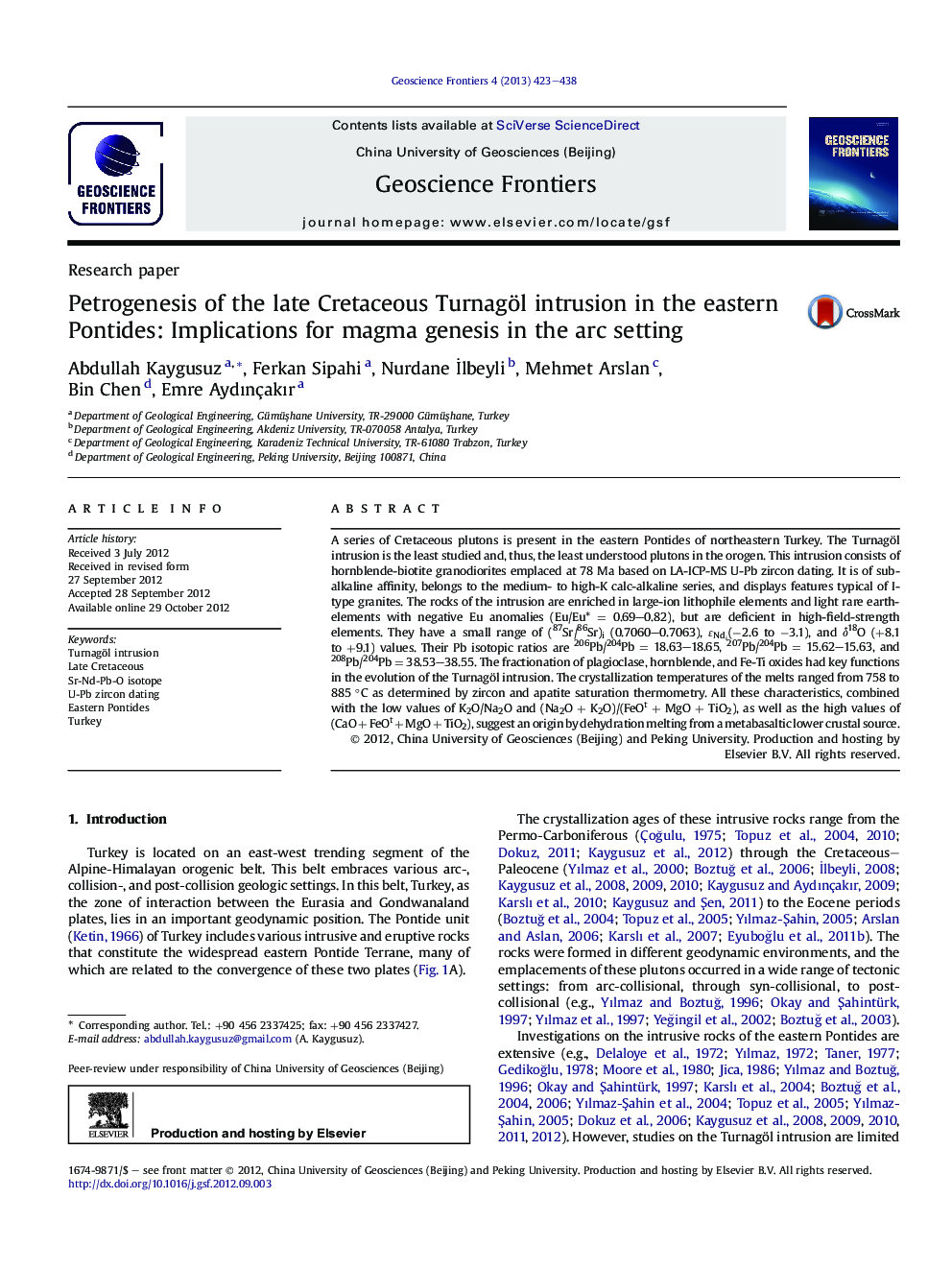| Article ID | Journal | Published Year | Pages | File Type |
|---|---|---|---|---|
| 4681746 | Geoscience Frontiers | 2013 | 16 Pages |
A series of Cretaceous plutons is present in the eastern Pontides of northeastern Turkey. The Turnagöl intrusion is the least studied and, thus, the least understood plutons in the orogen. This intrusion consists of hornblende-biotite granodiorites emplaced at 78 Ma based on LA-ICP-MS U-Pb zircon dating. It is of sub-alkaline affinity, belongs to the medium- to high-K calc-alkaline series, and displays features typical of I-type granites. The rocks of the intrusion are enriched in large-ion lithophile elements and light rare earth-elements with negative Eu anomalies (Eu/Eu* = 0.69–0.82), but are deficient in high-field-strength elements. They have a small range of (87Sr/86Sr)i (0.7060–0.7063), ɛNdiɛNdi(−2.6 to −3.1), and δ18O (+8.1 to +9.1) values. Their Pb isotopic ratios are 206Pb/204Pb = 18.63–18.65, 207Pb/204Pb = 15.62–15.63, and 208Pb/204Pb = 38.53–38.55. The fractionation of plagioclase, hornblende, and Fe-Ti oxides had key functions in the evolution of the Turnagöl intrusion. The crystallization temperatures of the melts ranged from 758 to 885 °C as determined by zircon and apatite saturation thermometry. All these characteristics, combined with the low values of K2O/Na2O and (Na2O + K2O)/(FeOt + MgO + TiO2), as well as the high values of (CaO + FeOt + MgO + TiO2), suggest an origin by dehydration melting from a metabasaltic lower crustal source.
Graphical abstractFigure optionsDownload full-size imageDownload as PowerPoint slideHighlights► Geochemical, geochronological and Sr-Nd-Pb-O isotopic data on Turnagöl intrusion. ► Geochemical data show an affinity to I-type granites. ► Origin of the magma correlated to dehydration melting of a mafic crustal source.
